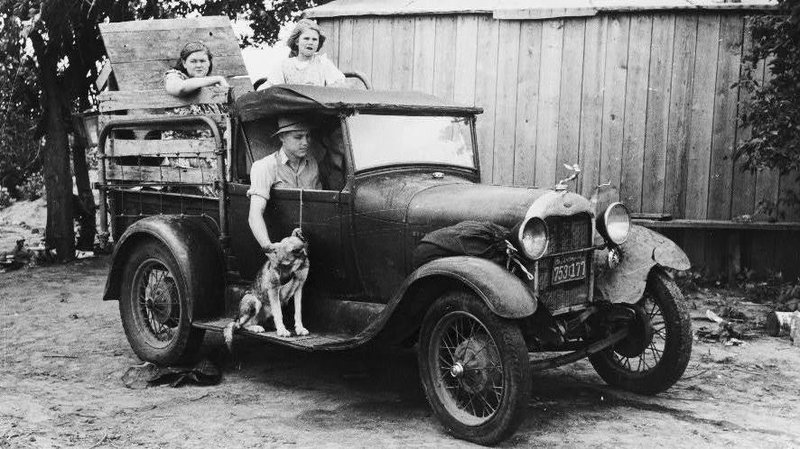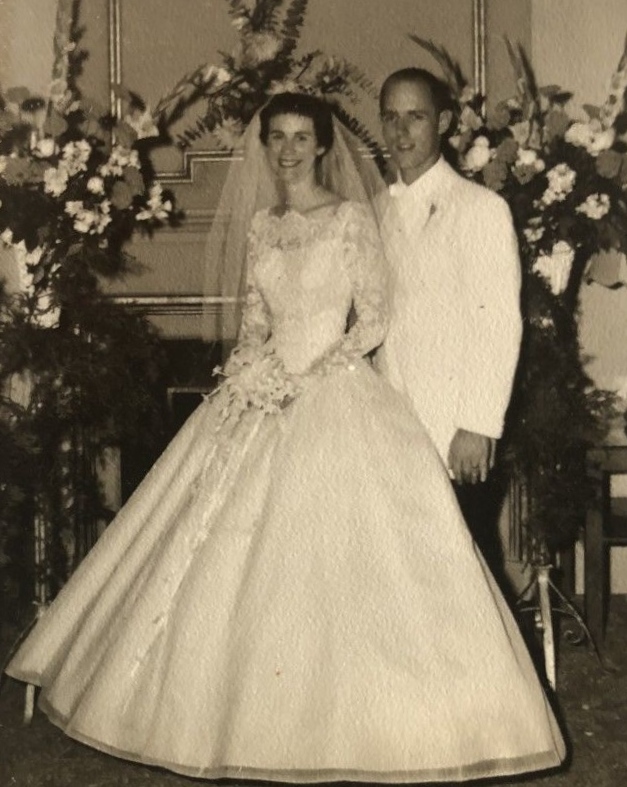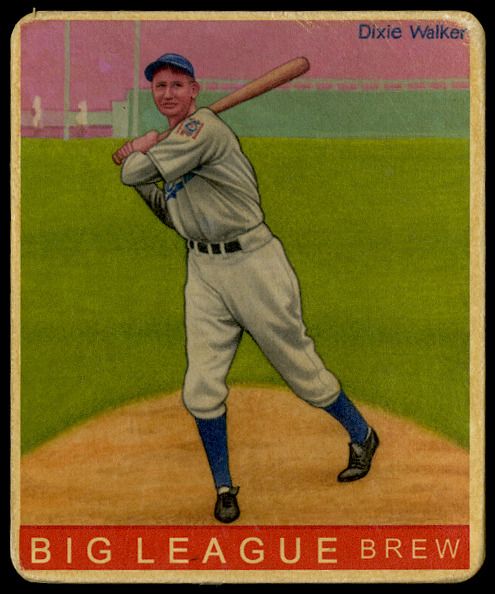The second estate sale of the late Alan Cohen’s quirky estate was a smash hit. When it was done James Cross of the Telegraph Antique Center came and hauled away things that didn’t sell.
I told Geneva Addison that her photo of James and his load made me think of the Joads in the Grapes of Wrath.
She beat me.
“Sanford and Son.” She won!
The sales were over, and now they get to relax and I get to share what more I have learned about Alan Cohen.
In my first post about Alan Cohen and his collections, I included what I knew about his life. Since then, more pieces of the puzzle have fallen into place.
A few days after the first post, I heard from his brother Ron.
Ron lives in Gary, Indiana (named for Elbert Gary of judiciary fame). He is a retired professor of history. He taught at Indiana University Northwest-Gary from 1970 until 2005, wrote and edited numerous books and articles, many of which were about American folk music, and co-produced compilations of folk and topical songs.
Here is a decent account of his work.
Ron was four years younger than Alan,
 Ron graduated from North Hollywood High School in 1958 and got a degree in history at Cal in 1962. He earned a masters degree in 1964 and a PhD in 1967 from the University of Minnesota-Minneapolis.
Ron graduated from North Hollywood High School in 1958 and got a degree in history at Cal in 1962. He earned a masters degree in 1964 and a PhD in 1967 from the University of Minnesota-Minneapolis.
The boys grew up in Los Angeles. They lived at 4251 West Avenue 40 in Eagle Rock until 1949. Their father Herman owned a furniture and appliance store, the Highland Park Good Housekeeping Shop. Herman was born in South Africa where his family moved in the 1890s from eastern Europe via England.
On Saturdays the brothers’ mother Helen would drop the boys near the Highland Theater on North Figueroa. They’d have lunch at a soda fountain, watch a double feature, and then walk to their father’s store to meet their mother and father for a family dinner out. This was a major fraction of their interaction with their father growing up. He worked six days a week and was all but invisible at home. He didn’t do much of the father-son things with his sons.
The store did well and the family’s financial situation improved. In 1949 they moved to 15003 Greanleaf Street, Sherman Oaks. The house had been owned by a gossip columnist. There were two back buildings. Alan set put a dark room in the smaller of the building. The larger building had a workshop where the brothers built models and a study. A bookshelf in the study opened to a bomb shelter where the boys played ping pong.
The Saturday movie routine continued but moved to Sherman Oaks.
The boys hung out at the Bob’s Big Boy on Van Nuys Boulevard in Van Nuys.
The family moved again in 1953 to 4527 Babcock Avenue, Studio City. Alan remained at Van Nuys High School, Ron transferred to North Hollywood Junior High.
Ron remembers Alan as a high schooler who was very creative and very mechanical, but who was neither academically successful nor very popular in high school. Ron: “He was probably too creative to be a good student in high school.”
 Robert Redford, Don Drysdale, and Natalie Wood were all students at Van Nuys High School when Alan was there.
Robert Redford, Don Drysdale, and Natalie Wood were all students at Van Nuys High School when Alan was there.
Alan was on the swimming team. He got into a dispute with the towel policy which said one towel only. He wanted a second one to stand on. The disagreement escalated to the Vice Principal who asked Alan what he could do for Alan if Alan agreed to one towel only. Alan asked that the Vice Principal take phone calls for him from the country club telling Alan when his shift parking cars would start that evening. Deal!
Alan modified a late 1940s Chevy to have five different horn tones controlled from the steering wheel. Alan didn’t smoke, so he used the ashtray as a planter for a cactus.
Alan was from the start a collector. Neither parent collected, so it was spontaneous combustion with Alan and to a lesser extent Ron. Alan’shigh school collections that Ron remembers were:
- Record albums, emphasis on folk music. Alan was introduced to the Weavers and Woody Guthrie working at a summer camp for troubled kids.
Alan hung out at a local record store whose owner was actor Ralph Dumpke. Ron remembers that Alan learned a lot from Dumke and that this is when Alan started collecting record albums.
- Tape recorders, feeding his lifelong fascination with the mechanical reproduction of music.
- Street signs and traffic signs, mounted on the walls of his bedroom.
- Animal skulls. If the boys found a dead bird, they’d bury it, let it decompose, and dig it up for the skull. A local butcher gave Alan a sheep skull for the collection.
- Masks. Their father brought the boys two masks from Mexico. Ron got first pick and chose one with pig bristles and cow’s teeth embedded. He wishes that he had chosen this one with the bump on the side of the head that Alan got. Happy ending: Ron now has it.
- EC’s Mad Comic, the predecessor to Mad Magazine. Alan had a nearly complete run that he eventually had bound.
After graduating from Van Nuys High School in 1954, Alan started junior college in Los Angeles, then moved to UCLA, and finally to Cal. In his final year at Cal, he lived in the house of a retired engineering professor who had come to Berkeley in about 1900 and whose stories about Berkeley got Alan interested in Berkeley History.
Cohen labored long and hard on this manuscript.
This family photo was taken in 1955. Alan was 19, Ron 15. The bow ties were provided by the photographer. That’s not how the boys rolled.
Ron and Alan overlapped for a few weeks in Berkeley when Ron first matriculated and Alan had graduated. In those first weeks in Berkeley, Ron joined a fraternity and (unrelated fact) attended a concert at the Florence Schwimlety Little Theater on the Berkeley High School campus.
He heard The Kingston Trio, who were riding the wave of popularity of “Tom Dooley.” Alan asked him how they were. Ron: “They were okay, but they weren’t the Weavers.”
After a few weeks Alan left for Chicago/Evanston for graduate study at Northwestern.
There he married Barbara. Anyone whose parents married in the 1950s can relate to this photo. While Alan and Barbara were in Chicago, daughter Abbie was born.
Alan’s first job when they moved back to Berkeley was at Highland Hospital in Oakland. He left Highland on his own accord and took a job as Chef of Psychiatric Emergency at Fairmont Hospital near San Leandro. Alan didn’t suffer fools lightly, and he lost his job at Fairmont after an argument with a supervisor he didn’t respect. The issue was the number of holiday shifts (overtime pay) that Alan took. The conflict was heightened because the supervisor suspected that Alan, who took the minutes at staff meetings, was leaking Fairmont’s dirty laundry to a San Francisco newspaper.
Alan wasn’t much of a traveler, so if Ron wanted to see his brother he would visit Berkeley. Alan and Barbara split up, and Alan reluctantly and slowly moved out of their home and moved to Albany.
Ron visited Alan at his apartment on Divorced Dads Hill in Albany in 1974, but doesn’t think that any of Alan’s nascent collections had moved out of the house in the hills where his now ex-wife Barbara lived. Abbie believes that her father took many of his objects and collections to Albany. Ron: “It was after Alan moved into the Vine Street house that the collecting really took off.” Abbie: “Yes, things grew exponentially after he bought the Vine Street house.”
In my starkly amateur opinion, Alan Cohen didn’t meet the criteria for a diagnosis of Compulsive Hoarding, also known as Hoarding Disorder, a behavioral pattern characterized by excessive acquisition of and an inability or unwillingness to discard large quantities of objects that cover the living areas of the home and cause significant distress or impairment. That said – he could throw trash away but not much more. He held on to everything but trash.
And he didn’t like change. When Grove Street (a few blocks east of his house) became Martin Luther King Jr. Way in the early 1970s, it stayed Grove Street for Cohen.
Alan professed to believe that a ghost named Marjory lived in the house. Marjory had in real life lived in the house in the 1920s; she was killed by a car and Alan would hear her moving things in the night. Abbie remembers her father telling her not to sell the house when he died because he wanted to live with Marjory forever.
Even after Alan’s main musical technology became an iPod and MP3 versions of 30,000 songs, he continued buying albums. Ron joined him visiting the used record store on the day when the newly acquired albums were put out and would load up.
As for the rhinos – Alan was offered a wastebasket made from a real-life rhino foot. He declined. Ron also remembers Alan visiting Mr. Mopps and buying rhinos there. Alan talked about bequeathing his entire rhino collection to a rhino museum or zoo or sanctuary. He didn’t consummate the idea.
In the early 1960s, Alan had no interest in the student or antiwar movements growing in Berkeley. His wife Barbara was against the Vietnam War, but Alan was not. At some point, he embraced left politics without any grounded theory.
Alan was an early subscriber to Paul Krassner’s Realist. It was a milestone in the American underground or countercultural press. Krassner created this bumper sticker. This was about the time that the United States Supreme Court issued its decision in Cohen vs. California, 403 U.S. 15 (1971), The Court overturned a conviction of Paul Robert Cohen for the crime of disturbing the peace by wearing a jacket displaying “Fuck the Draft” in the public corridors of a California courthouse
The counterculture was of interest to Cohen. He was an early adapter with marijuana. Ron met Alan’s dealer and describes him as the straightest looking man in Berkeley.
Alan enjoyed Mother Jones, and gave Ron a subscription to it several years ago.
Alan had a troubled relationship with his father, who was an alcoholic. When his father died, his mother moved into St. Paul’s Tower, an Episcopalian retirement home on Lake Merritt. He kept up with her until she died.
Here is a decent account of Ron’s work.He has written extensively about folk music. His folk music publications include:
- “Wasn’t That a Time!”: Firsthand Accounts of the Folk Music Revival (Metuchen, N.J.: Scarecrow Press, 1995);
- (Co-produced with Dave Samuelson), Songs for Political Action: Folk Music, Topical Songs and the American Left, 1926-1954 (10 CD box with 212 page illustrated book, Bear Family Records BCD 15720, 1996);
- Agnes “Sis” Cunninghm and Gordon Friesen, Red Dust and Broadsides: A Joint Autobiography (Amherst: Univ. of Massachusetts Press,1999);
- (Co-produced with Dave Samuelson), Goodnight Irene:The Weavers, 1949-1953 (4 CD box with illustrated book, Bear Family Records, 2000);
- (Co-produced with Jeff Place), The Best of Broadside: 1962-1988: Anthems of the American Underground From the Pages of Broadside Magazine (5 CD box with illustrated book, Smithsonian Folkways Recordings, 2000);
- Rainbow Quest: The Folk Music Revival and American Society, 1940-1970 (Amherst: Univ. of Massachusetts Press, 2002);
- Alan Lomax: Selected Writings, 1934-1997 (N.Y.: Routledge, 2003);
- Folk Music: The Basics (N.Y.: Routledge, 2006);
- A History of Folk Music Festivals in the Unites States: Feasts of Musical Celebration (Lanham, MD: Scarecrow Press, 2008);
- (Co-produced with Robert Riesnan), Chicago Folk: Images of the Sixties Music Scene: The Photographs of Raeburn Flerlage (Toronto: ECW Press, 2009);
- Work and Sing: A History of Occupational and Labor Union Songs in the United States (Crockett, CA: Carquinez Press/Fund for Labor Culture and History, 2010; distributed by the University of Illinois Press);
- Alan Lomax, Assistant in Charge: The Library of Congress Letters, 1935-1945 (Jackson, MS: University Press of Mississippi, 2011);
- (Co-produced with Jim Capaldi), The Pete Seeger Reader (New York: Oxford University Press, 2015);
- Woody Guthrie: Writing America’s Songs (N.Y.: Routledge, 2012);
- (Co-produced with Will Kaufman), Study War No More: A History of Peace Songs in the United States (Boulder, CO: Paradigm Publishers, 2014, distributed by Routledge);
- (Co-produced with Rachel Donaldson), Roots of the Revival: American and British Folk Music in the 1950s (Urbana: University of Illinois Press, 2014)
- (Co-produced with Stephen Petrus), Folk City: New York and the American Folk Music Revival (N.Y.: Oxford University Press, 2015);
- Depression Folk: Grassroots Music and Left-Wing Politics in 1930s America (Chapel Hill: University of North Carolina Press, 2016);
- “Jews in Folk Music,” Stars of David (Vienna: Hentrich & Hentrich, Judische Museum Wien, 2016), 200-203;
- (Co-produced with David Bonner), Selling Folk Music: An Illustrated History, 1900-1970 (Jackson: Univ. Press of Mississippi, 2017);
- Cohen and Stephen Petrus, “Folk Music and Political Activism in Greenwich Village and at the Newport Folk Festival, 1935-1965,” Brett Lashua et al, eds., Sounds and the City, Vol. 2 (Palgrave Macmillan, 2019), 279-302.
He donated a collection with approximately 11,500 items pertaining to folk music to the University of North Carolina at Chapel Hill.
He also donated a large amount of material to the Woody Guthrie Center in Tulsa, Oklahoma. The Center tells us: “This collection includes an extensive reference book collection (housed separately), original research notes and papers, manuscripts, correspondence, numerous music journals, periodicals and magazines, song books, sheet music, photographs, media, festival and event posters, research articles, extensive folk festival ephemera, and realia related to the history of folk music, primarily in the United States.”
His Roots of the Revival is of great interest to me and my work-in-perpetual-progress on disruptive cultural forces in the 1950s.
Ron Cohen worked with Archie Green, a San Francisco folklorist specializing in laborlore (defined as the special folklore of workers) and American folk music. Devoted to understanding vernacular culture, he gathered and commented upon the speech, stories, songs, emblems, rituals, art, artifacts, memorials, and landmarks which constitute laborlore.
Archie Green was a mentor of mine in my work on slang. He urged me to write about the language of workers. He steered me to the WPA’s Lexicon of the Trades in the Library of Congress and pushed me to write about the language of lineman.
Archie’s wife Louanne worked with the Farm Security Administration at the Linnell Farm Labor Camp in Visalia in the early 1940s. So did my mother.
 So did Fred Ross who in 1952 would recruit and train Cesar Chavez as an organizer for Saul Alinsky’s Community Services Organization. Fred’s son Fred Ross Jr. and I have worked together off and on since 1972.
So did Fred Ross who in 1952 would recruit and train Cesar Chavez as an organizer for Saul Alinsky’s Community Services Organization. Fred’s son Fred Ross Jr. and I have worked together off and on since 1972.
For the last ten years we have worked together at IBEW Local 1245. He has performed miracles.
Moving on from brother Ron –
Over the years, Alan had dogs and birds. On weekends he’d walk the dogs on campus. He gathered molted feather from his parrots and assemble them for their color.
This is Phyllis in a saucy pose. Phyllis went to live with Abbie late in Alan’s life. Phyllis doesn’t talk, but she can imitate the bark of Wally the dog (below), Abbie’s sneeze, and Alan’s chuckle.
This is Wally, full name Walpole as in Horace Walpole Carpentier, about whom Alan wrote a great deal Wally’s late brother was named Horace. Wally too came to live to Abbie towards the end of Alan’s life.
Alan had four children, Abbie (the oldest) and three sons – Ari, Jeremy, and Andrew.
Abbie was a City of Berkeley police officer from 1990-1998. She is a Marriage and Family Therapist in Benicia who is a clinician with the West Coast Post-Trauma Retreat. Of the four children she had the most contact with Alan over the years. Her stories about him are scattered throughout these posts.
In her twenties, she began collecting artistic depictions of cows. Alan was a codependent to her collecting. A codependent enables another person’s addiction, poor mental health, immaturity, irresponsibility, or under-achievement. It thus might be hyperbolic here.
Oh, oh. There are a few cows here but quite a few not-cows here. Mission creep!
Although there is evidence of some restraint in her collection, she is the first to admit – “I am my father’s daughter.”
Jeremy Cohen’s (born 1964) great passion is baseball. He is a serious coach of serious youth baseball. When he played youth baseball himself, he doesn’t remember his father coming to a game. Jeremy later asked Alan why he hadn’t come. Alan somehow blamed Barbara. He told Abbie that if Jeremy was involved with something that he was interested in he would have been happy to support him. When Abbie said it was about supporting his son, it made no sense to him.

October 22, 1972. The A’s beat the Cincinnati Reds 3-2 in Game 7 of the World Series. It was the first World Series win for the A’s since 1930. My father had an autographed baseball from that World Series. I gave it to my high school history teacher Mr. Collins whose father Eddie Collins played on that team.
Jeremy was an A’s fame for the first 14 years of his life. Between 1971 and 1975 the A’s were a team to be taken seriously. In 1976 major league baseball accepted free agency for players, and the A’s dismantled. Owner Charles Finley dismantled the team. By May 18, 1976, the Athletics were 18–24, and seven and a half games out of first place.
In 1978, Jeremy dissevered the joys of National League baseball and became a Giant’s fan. The Giants finished in third place, six games behind the Dodgers.
Willie McCovey had returned from a few years away from the Giants. He returned without a guaranteed contract, but he earned a position on the team; he batted only .228.
Jeremy has been to every Giant’s Opening Day since 1979.
Jeremy was 10 when Alan left Barbara. Jeremy remembers the Vine Street house when his father moved in. It was in disrepair. Alan had the floors refinished and had the walls wallpapered. It looked a lot better. Jeremy believes that these were the last improvements Alan made.
Jeremy spent some weekends with his father on Vine Street, sleeping on a roll-away cot or a sofa in the front room. The children lived with their mother. She was liberal, and would do everything for everyone. She learned Spanish, and sponsored local boys from El Salvador and Guatemala .
Jeremy has very eclectic tastes in music, something which he attributes to his father. I asked if he thought that his father listened to every album that he bought. Cohen didn’t say no, but he described how his father couldn’t walk by a sign saying “20 records /$5.”
I asked Jeremy if he remembered Gretchen the mannequin. “Of so very well.” Jeremy returned home from visiting his grandparents and ran into Gretchen in the hall. He was very frightened. He would play that trick on his friends, scaring them. They referred to Gretchen as “The witch in the hallway.” He thinks that Gretchen moved to Albany with Alan and then to Vine Street, but that after a few years she was gone.
When Alan moved out of the house he shared with Barbara in 1974, he left some “stuff” there. He acquired a few things when living in Albany, but it wasn’t until he lived on Vine that he really got going collecting. Once Alan started in with the rhinos, people would bring him rhinos they ran across. Even as the collections grew, Jeremy says that his father knew where every little thing was in the house or garage/workshop.
Jeremy seconds the observation that Alan didn’t like change, that he didn’t like Grove Street being renamed Martin Luther King Way. When Jeremy was getting along with his father, he’d use “Grove Street.” When he felt that passive aggression was in order, he’d say “Martin Luther King Way.”
He has a few things from his father.
He has his father’s MacGregor baseball glove. It is a Dixie Walker model.
Dixie was born in Georgia and lived in Alabama.
He is perhaps best remembered for his reluctance to play with Jackie Robinson when the Dodgers brought Robinson into the major leagues in 1947. He said he opposed Robinson’s joining the team “not because I had anything against Robinson personally or against Negroes generally. I had a wholesale business in Birmingham and people told me I’d lose my business if I played ball with a black man.”
Jeremy also has a 1945 figurine from the Baltimore Elite Giants that he found at his father’s house.
The Baltimore Elite Giants layed in the Negro leagues from 1920 to 1950. The team was originally the Standard Giants but was renamed the Elite Giants in 1921 The team and its fans pronounced the word “Elite” as “ee-light”.
 Hall of Fame players Roy Campanella and Leon Day, Junior Gilliam (1953 National League Rookie of the Year), and Joe Black (1952 National League Rookie of the Year) were former Elites.
Hall of Fame players Roy Campanella and Leon Day, Junior Gilliam (1953 National League Rookie of the Year), and Joe Black (1952 National League Rookie of the Year) were former Elites.
Jeremy acknowledges Abbie as the most serious collector among Allan’s kids, but Jeremy has some bobble heads and the nameless Baltimore Elite Giant.
And now sons Ari and Andrew.
Abraham Lincoln gave a speech on June 16, 1858, at what was then the Illinois State Capitol in Springfield, after he had accepted the Illinois Republican Party’s nomination as that state’s US senator.
 That speech contains the words “A house divided against itself…” Along with the Gettysburg Address and his second inaugural address, the speech became one of the best-known speeches of his career.
That speech contains the words “A house divided against itself…” Along with the Gettysburg Address and his second inaugural address, the speech became one of the best-known speeches of his career.
Alan’s sons Ari and Andrew were estranged from their father beginning in 2006 or 2007, just as Alan had been estranged from his own father. Barbara was the parent that Alan wasn’t. Jeremy: “She was always there for us.”
Ari earned a master’s in social welfare . For 15 years he worked as a psychiatric social worker for Alameda County. He burned out, threw himself into a vegan diet, and we will soon see where that ended up.
Andrew became something of a celebrity with videos that he created while working for the San Francisco Police Department. He rapped over a mix of police dispatcher calls, radio traffic, and car/siren noises.

 His video “Cops Gone Wild” video drew the ire of San Francisco police Chief Heather Fong.
His video “Cops Gone Wild” video drew the ire of San Francisco police Chief Heather Fong.
About 20 San Francisco police officers were suspended because of their involvement in what the police chief described as videos that mock minorities and treat women as sex objects. “This is a dark day — an extremely dark day — in the history of the San Francisco Police Department for me as a chief to have to stand here and share with you such egregious, shameful and despicable acts by members of the San Francisco Police Department,” Chief Heather Fong said at a City Hall press conference. Strong words!
Cohen fought City Hall for years and then resigned from the SFPD in July 2010.
He and his brother Ari now own and operate Mr. Dewie’s Cashew Creamery.
Mr. Dewie is a fictitious name based on a character that Ari played in a music video that he and Andrew were involved in many years ago. It became a nickname for Ari in some circles, and they felt that it was a catchy name for an ice cream line.There are several East Bay scoop shop locations. The one I know is what used to be the Burger Depot on Solano just above San Pablo. The cashew cream sandwiches are to die for, worth their $7 price tag. There are times when I think that I could live on the mint chip ice cream sandwich.
With Mr. Dewie’s, Andrew went back to making videos, rapping about cashew cream not cop stuff.
Our last stop within the family is Ron’s daughter Alysha Featherman, who wrote me this about her uncle Alan:
I visited him mostly with my Dad and a few times over the years on my own. We didn’t talk much for many years until I had my daughter. Alan was very interested in Eva and he really enjoyed meeting her a few years ago when I visited him with her and my husband, Gregg.I always liked/tolerated Uncle Alan and had a very different experience of him than his kids did. His house was a world that he created and I always thought of it as a folk art environment. I especially liked the old radio cabinets that had lights and music with a tableau inside when you opened the doors. I remember going to flea markets with him and looking for objects and rhinos. A few times when I found a rhino I would get it for him. I once sent him one that was wearing a tutu.It was so different to be in his house without him there and I’m still processing that the collection and the house won’t be there any more. My Dad, Abbie and I all have small collections of things/toys/art that we display. So that is definitely a family trait. I was amazed going to Abbie’s house last month and seeing her carefully arranged objects. I’ve had little “museum” shelves arranged since I was little too.
Let’s step outside the family for more data points on Alan.
Alan was off-and-on involved with the Berkeley Architectural Heritage Association.
Anthony Bruce has been the heart and brain of BAHA for decades. In the 1970s, he met Alan Cohen. He attended meeting(s) at Alan’s home, and does not remember it as being filled with things yet.
Cohen had a plan to form the Mary Townsend League, combining elements of BAHA and the Berkeley Historical Society. Townsend lived on Shattuck Avenue and refused to move when plans were announced to lay tracks for street cars and trains. The San Francisco Call of 25 November, 1896, reported that she had boarded up her house and, armed with a revolver, announced that she was ready to shoot anyone who tried to move or demolish her house. Richard Schwartz dedicated a full chapter of his Eccentrics, Heroes, and Cutthroats of Old Berkeley to Mary Townsend. Good oppositional role model for Alan!
The League didn’t take root. Cohen did significant research on his house and block. When I mentioned Marjory the Ghost who once lived in the house, Anthony Bruce remembered Cohen saying something along those lines.
Cohen moved in and out of the BAHA world, disappearing for years without explanation. Bruce remembers thinking that Cohen was “problematic,” but he can’t remember any specific actions that led him to that conclusion.
I mentioned above that Alan worked for years on A History of Berkeley from the Ground Up. It is no longer available on what had been Cohen’s website, but it is archived and can be found through the website of the Berkeley Historical Society. Steven Finacom of the Berkeley Historical Society read Cohen’s draft and praised it. He, however, told Cohen that it would benefit from footnotes or at the very least from a bibliography. Cohen opposed the thought and stopped communicating with the Historical Society.
So there you have it. Memories of Alan and a glimpse at his brother and children. Whatever dysfunction surrounded Alan Cohen, they have all led extraordinary lives following different drummers, seeking a newer world.
My friend walked in just as I was preparing to show him this draft. He showed me two photos.
“I was hiking up in Derby Canyon and saw these. I’d call them quirky, wouldn’t you?”
Yes, I would. I thanked him and showed him the draft post. As he read it I went to the freezer and took out a Mister Dewie’ chocolate cashew cream sandwich. I cut it in half and walked back to give him his half. I asked him what he thought of this little family history.






























































